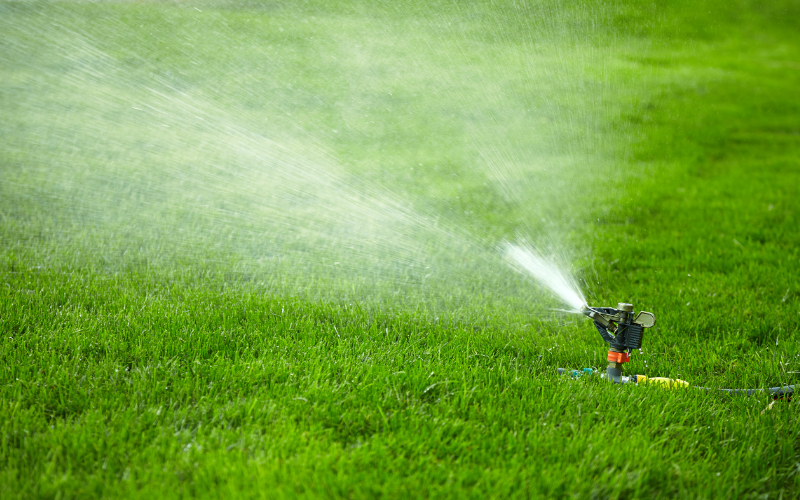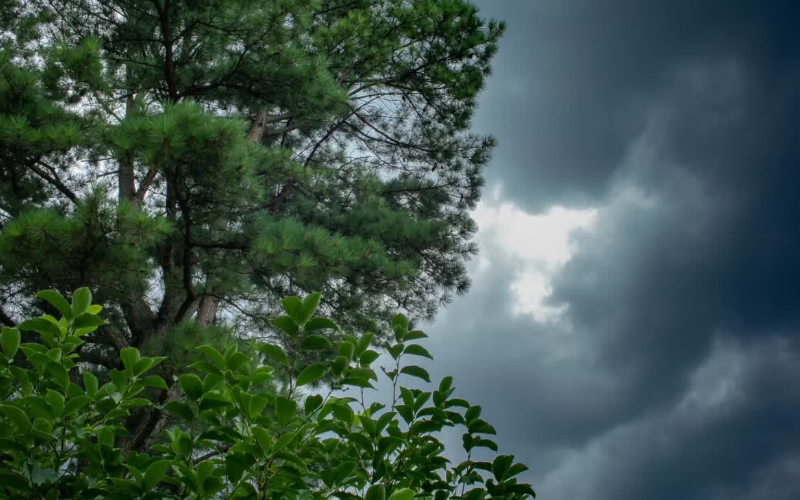GrubEX is a popular grub control product produced by the Scotts Miracle-Gro Company. While easily available and fast-acting, the proper steps still need to be taken to ensure that GrubEX is effective. Some people get confused about the conditions in which GrubEx can be applied to a lawn. If you live in a particularly wet part of the country, you might wonder, can I apply GrubEx to a wet lawn? That’s exactly what we’re going to discuss here.
Can I Apply GrubEX to a Wet Lawn?
Yes, you can apply GrubEX to a wet lawn. GrubEX is meant to get wet immediately after being broadcast. This step is critical in the application of GrubEX if it’s going to be effective. However, applying GrubEX to a wet lawn does not mean you can skip the water application step. Your lawn still needs to be watered deeply and evenly after the application of GrubEX.
- Scotts GrubEx1 Season Long Grub Killer can help prevent turf damage by killing grubs when they are young
- One application of this lawn care treatment kills and prevents grubs for up to 4 months
- This grub killer also controls caterpillars (armyworm), chinchbugs, May/June beetles, and more (as listed), and can help control Japanese beetle infestations when applied annually
- Apply this granular insecticide to a dry lawn in the spring or early summer to kill grubs as they develop before they cause damage to your lawn
- One 14.35 lb. bag of Scotts GrubEx1 Season Long Grub Killer covers 5,000 sq. ft.
Last update on 2025-04-16 // Source: Amazon Affiliates
Do You Still Need to Water GrubEX if it’s Applied to a Wet Lawn?
Though GrubEX is activated by any amount of moisture, GrubEX still needs to be watered into a lawn after it’s applied. This is true even if the lawn was wet before the application of GrubEX. Grubs don’t live on the surface. In order for the dry granules containing the GrubEX to stop these grubs from growing and destroying your lawn, you need to get them into the ground.
Watering your lawn after the application of GrubEX helps the active ingredients in this produce reach down into the soil where the grubs live. This is why you need to water your lawn evenly and with enough water to dissolve the GrubEX and help it distribute throughout the top few inches of soil.
Should I Apply GrubEX Before Rain?
Applying GrubEX before heavy rain is the only way to skip the watering step altogether. After it rains, make sure that you don’t see any remaining granules poking up through the grass or sitting on top of it. If you do, water these sections or the entire yard again until the granules disappear or for 20 minutes. GrubEX can stay on the surface of the lawn without being watered in for several weeks with no harm to the product as long as it isn’t blown away in a strong wind.
How Long Should I Water GrubEX?
GrubEX, according to the manufacturer, should be watered in to a depth of 1” or for about 30 minutes with regular water pressure and average sprinkler settings. Doing this several times over the first week or two of application can further help the distribution of this product. GrubEX itself can be applied 2 to 3 times a year, depending on the region you live in and your lawn’s needs.
Can I Broadcast GrubEX and Grass Seed at the Same Time?
GrubEX and its active ingredient, Chlorantraniliprole, is an insecticide that should have no short-term or lasting effects on any plant life. It can even be mixed with grass seed at the time of planting to protect the seed and seedlings from grubs. Applying GrubEX and grass seed to a lawn at the same time can also save on water as they have similar water and timing needs. GrubEX is nearly impossible to overwater unless flooding occurs.




I have found grubs in the soil around my blueberry bushes. Would it be safe to apply GrubEx around these bushes and other areas where I have herbs planted?
Thanks very much!
Hi Ray,
While it doesn’t say much on the actual packaging of GrubEx, the NPIC (National Pesticide Information Center) notes that GrubEx has a very low toxicity rating, especially for humans. The only recorded case of poisoning for the active ingredient in GrubEx, Chlorantraniliprole, resulted in a temporary abnormal heart rate but no permanent damage. It is also considered to be “not likely to be carcinogenic to humans.”
Chlorantraniliprole itself is also applied to the soil used to grow kale, broccoli, cabbage, and other brassicas regularly to control both grubs and cutworms. Given all of this information, I believe applying GrubEx around these plants would be low-risk. GrubEx should also have no adverse effects on the plants themselves.
http://npic.orst.edu/factsheets/chlorantraniliprole.html
I hope this helps you!
Tom.